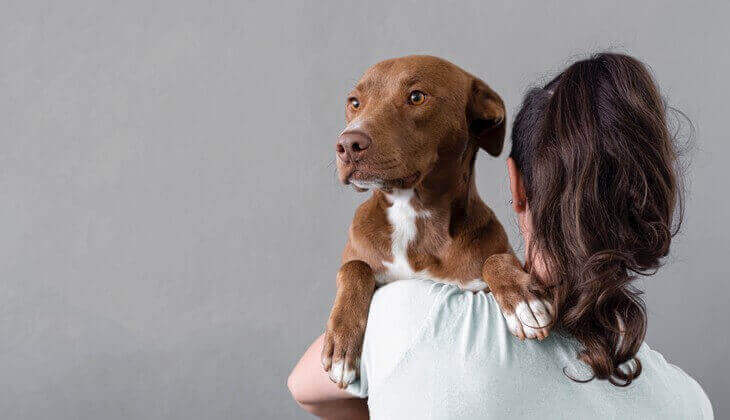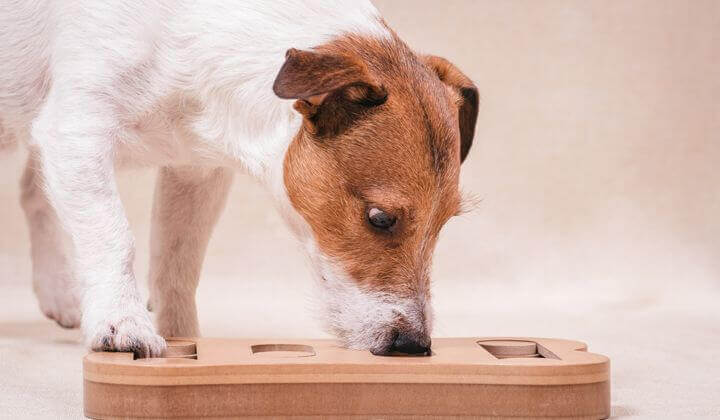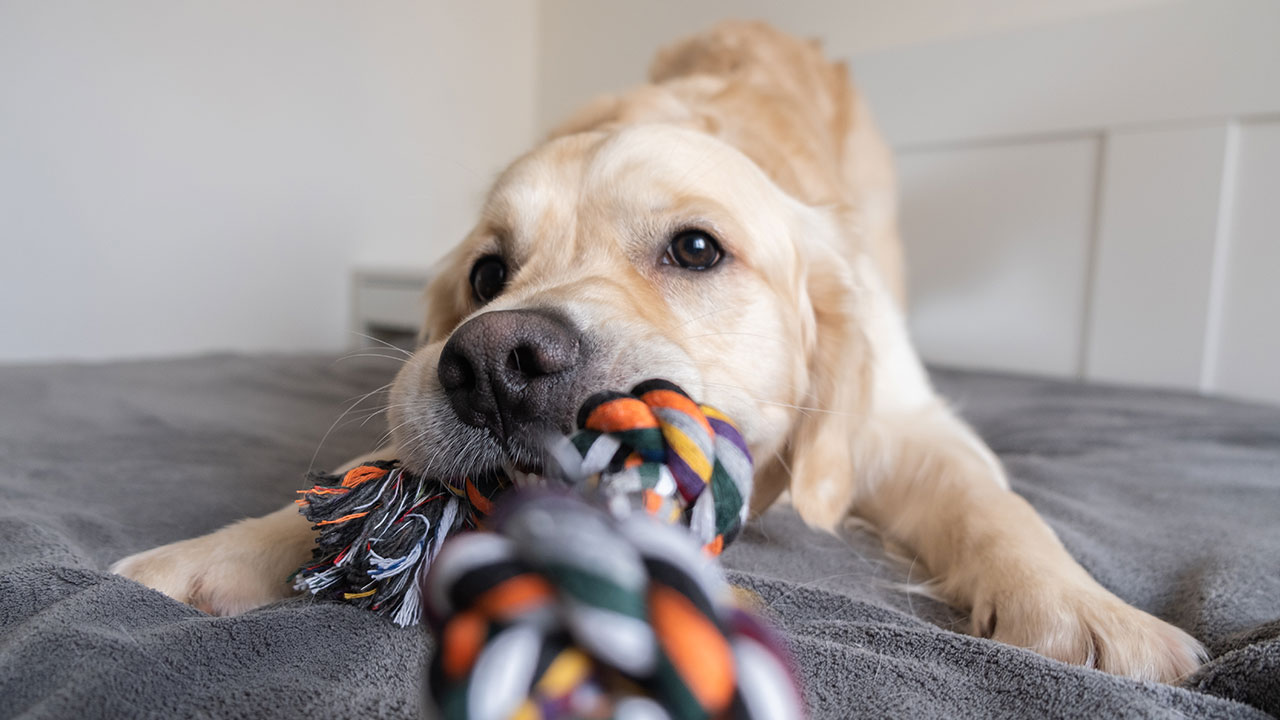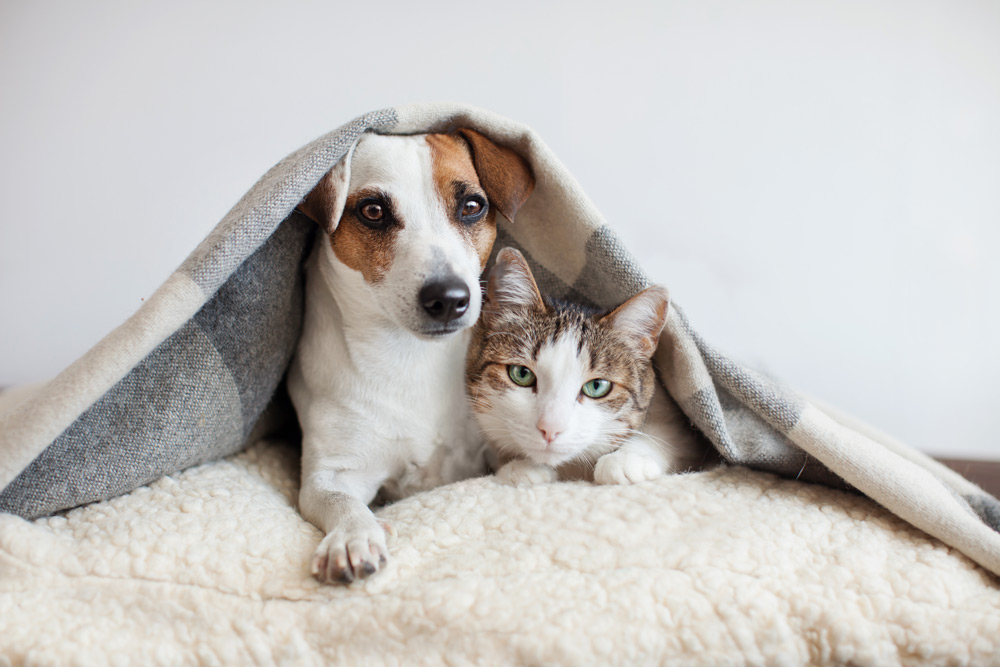If you’re lucky enough to be home all day with a dog, then you know what a great companion your furry friend really is, especially during stressful times. There have been many studies that illustrate the benefits of sharing your life with a canine friend, including reducing anxiety, lowering blood pressure and increasing levels of serotonin and dopamine (both of which play a big part in your calm and wellbeing). Most importantly, having a dog bolsters routines when you’re home, and helps to maintain a sense of normalcy.
Our dogs meanwhile, are social creatures by nature, so they are thrilled to have their humans home with them day and night. But what will happen to our dogs when we eventually go back to work and school? How will our dogs cope when we return to previous routines and they are left alone for longer stretches of time? For many dogs, this change can be perceived as a major life event and even pups who never exhibited any signs of separation anxiety in the past, can suddenly develop severe stress and behavioural issues linked to your dog having separation anxiety.
There are some measures you can take now that will not only help your dog’s sense of security, but will also improve his or her quality of life.

TEACH YOUR DOG TO SELF-PACIFY
You want your dog to be comfortable being alone and if you can help your dog learn “alone time skills,” it will serve you both well in the future.
Here are a few ideas for implementing self-pacifying skills:
- Tether your dog by a light leash to a stable object a metre or two away from you. Give him or her a food-stuffed chew toy to keep your pup happily occupied. Try doing this at least five times a day, for 5 to 10 minutes. As your dog shows less signs of distress, gradually increase the distance between you until you are able to be in a completely different room.
- If your dog is crate trained, give him or her multiple rest sessions in the crate throughout the day. These should be brief and he or she should have a food-stuffed toy for occupational therapy.
- If your dog is not crate trained and you have a crate at home, consider starting the process by feeding him or her meals in the crate and putting treats and toys in there. This will encourage your pooch to go inside and hang out, and you can start working on brief stints of crate time for your pup with you nearby.
- If you enjoy taking walks or exercising outside, consider taking at least one short walk a day without your dog. You can also practice going in and out of your front door alone.
- Provide for your dog to have at least one nap a day away from you. You can have him or her snooze in a crate or separated by a baby gate, a pen or a door.

PROVIDE A PREDICTABLE ROUTINE
Predictability has a calming effect on people and dogs! Especially if your dog is anxious, making his or her day predictable, whether you are home or away, will go a long way to soothing those canine nerves.
Try to establish a daily routine so your pooch can start to know when to expect your attention.
This means feeding, exercise, playtime, potty time and training. Your dog should also know when in the daily schedule he or she should anticipate inattention from you. These are times when he or she should be napping or playing with a favourite toy. Try to schedule these periods for times when you would normally be away from home.
PHYSICAL AND MENTAL ENRICHMENT
When you are interacting with your dog – during play, exercise, training and toilet-time – you will want to make these times fully engaging. These sessions should be regular and enriching enough for your furry friend that when each session is over, he or she is ready to settle down and relax.
You might also want to provide a vigorous session of play and exercise before any departure or prior to scheduled alone-time for your dog.
This helps to reduce your dog’s energy and tire him or her out so your pup is ready to relax hopefully reducing the period of your dog having separation anxiety.

Welcome to the Pet Park
Explore the best content for your furry friend.
DESIGNATE A RELAXATION AREA
Teaching your dog to rest or play with toys in a designated spot will provide a secure area where he or she can settle when you are not home. You can begin by training your dog to go to the spot with rewards, gradually increasing the stays in the relaxation area. Ultimately, you will want to establish a daily routine where the dog learns to go to this spot after each exercise or play time to either nap or play with toys. You can give your dog rewards in this spot and add other elements to make it relaxing, such as a comfortable bed, music or a piece of clothing with your scent.

COUNTERCONDITIONING
For dogs that have mild separation anxiety, a process known as “counterconditioning” can be quite effective. Through this training, your pet’s fearful or anxious reaction to a situation is changed to a relaxed response instead. Over time, your dog will learn that the thing he or she fears – you leaving him or her alone – actually results in something good. In the case of separation anxiety, this generally means something yummy to eat. To develop this association, you can give your dog a toy stuffed with food, such as low-fat cream cheese, peanut butter or frozen banana. It should take a good 20 to 30 minutes for your pooch to finish the treat – enough time that he or she is fully satisfied and content. When you return home, you should remove these treats so that they are only associated with your departures.
This sort of training however, is only effective on dogs with mild separation anxiety. Dogs with more severe anxiety generally do not want to eat at all.
SEVERE SEPARATION ANXIETY IN DOGS
In more severe cases of separation anxiety, the training is more complex. Your nervous dog will need to become gradually accustomed to being alone with short separations that gradually increase. The process for these dogs is known as “desensitization and counterconditioning.” This process is best implemented under the guidance of a trained and experienced professional as it could easily backfire and your dog could become even more frightened and stressed out.

SIGNS TO WATCH FOR
If you are concerned that your four-legged friend is experiencing any form of separation anxiety, here are some common signs to watch for:
- Urinating/Defecating. Some dogs will “have accidents” when left alone. If accidents happen in the presence of his or her humans, the problem is most likely not separation anxiety.
- Barking/Howling. When left alone, many dogs will voice their unhappiness. This barking and howling is persistent and is triggered by being alone.
- Chewing/Digging/Destruction. Some dogs will destroy household objects, chew on door frames or shoes, or dig at doors and doorways. These behaviours can result in self-injury, such as broken teeth, cut and scraped paws and damaged nails.
- Escaping. A dog with separation anxiety might try to escape from the area where he or she is confined. They may do this by trying to dig or chew through doors or fences, which can also result injuries to their teeth and nails.
- Pacing. Some dogs walk or jog along a specific path in a fixed pattern. They may run in circles or pace back and forth.
Most important to note about all of these behaviours, if they are due to separation anxiety, they generally do not happen in the presence of their humans.
PLEASE REMEMBER…
Your dog’s anxious behaviour is NOT the result of disobedience or spite. If your dog exhibits behaviours associated with separation anxiety, try to remember that he or she is upset and trying to cope with stress. It’s important not to scold or punish your dog for these behaviours. If you do, your pooch may become even more upset and the problem could get much worse.
Remember that your furry companion is here for you while you are home, and you need to be there for him or her when you return to your routine.
Looking for a Vet?
Your veterinarian plays a big role in your pet’s health. Input your location information and get a list of veterinarians near you.
Find A Vet Near Me





 Go To United States
Go To United States Austria
Austria Belgium
Belgium Czech Republic
Czech Republic Denmark
Denmark Europe
Europe Finland
Finland France
France Germany
Germany Greece
Greece Hungary
Hungary Ireland
Ireland Israel
Israel Italy
Italy Netherlands
Netherlands Norway
Norway Poland
Poland Portugal
Portugal Romania
Romania Slovakia
Slovakia Spain
Spain Sweden
Sweden Turkey
Turkey United Kingdom
United Kingdom